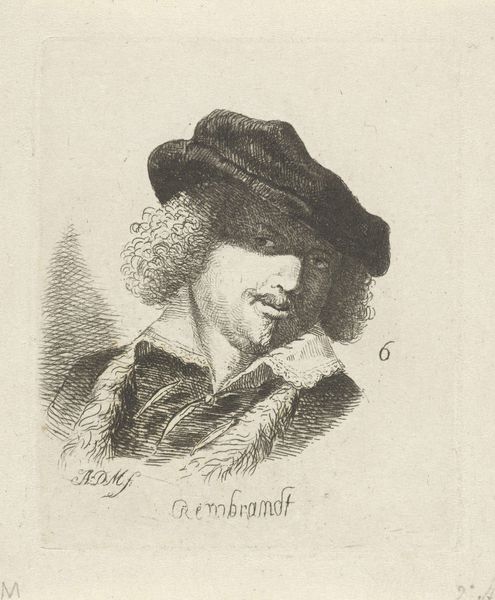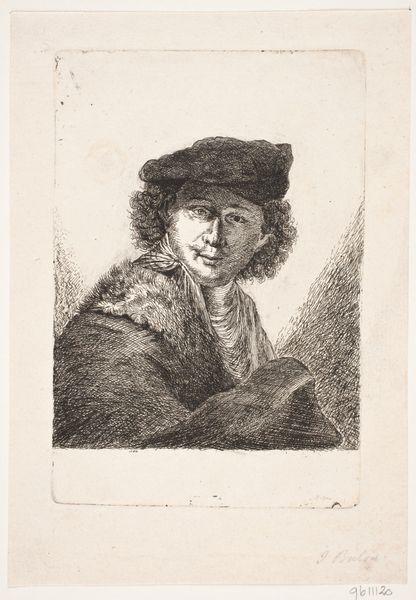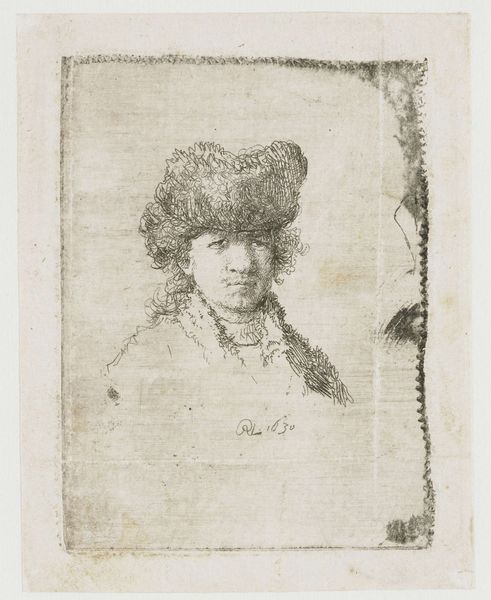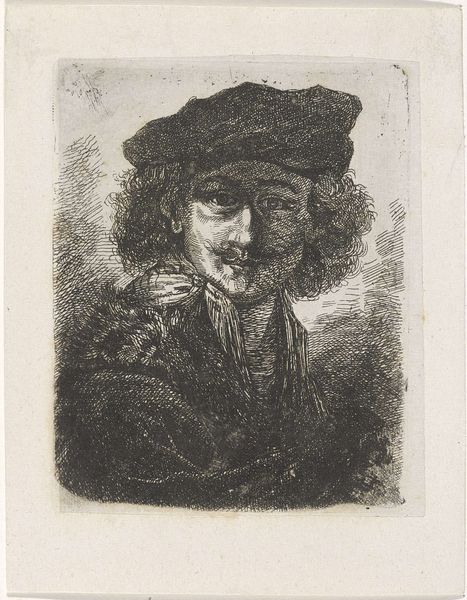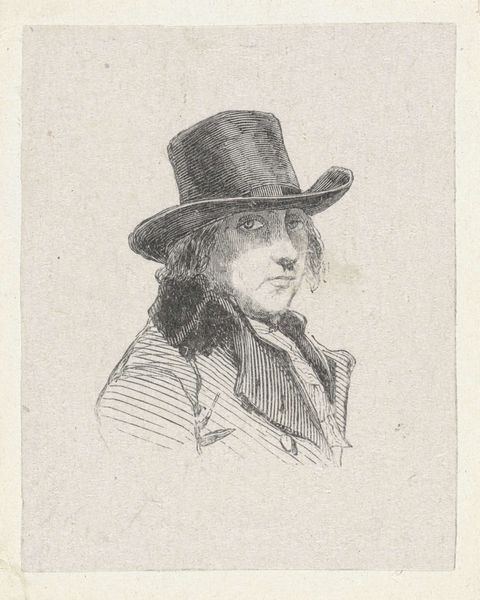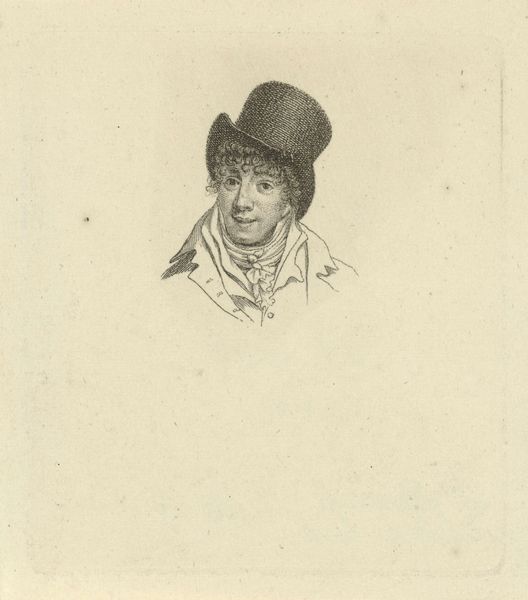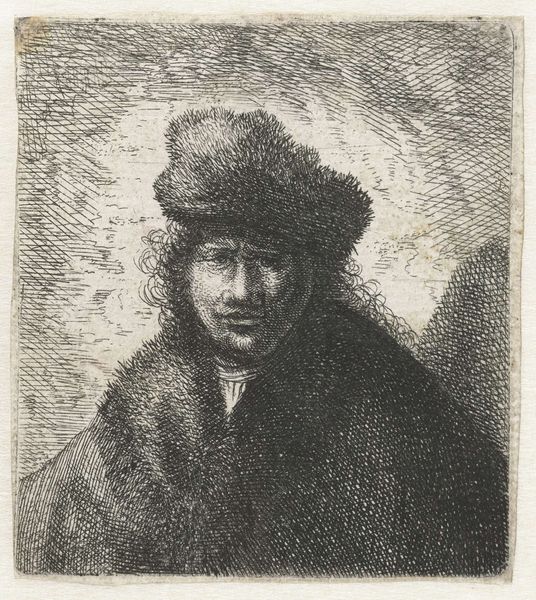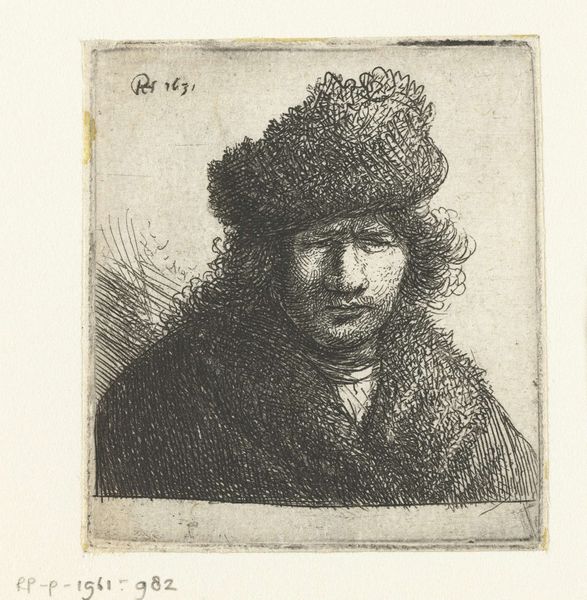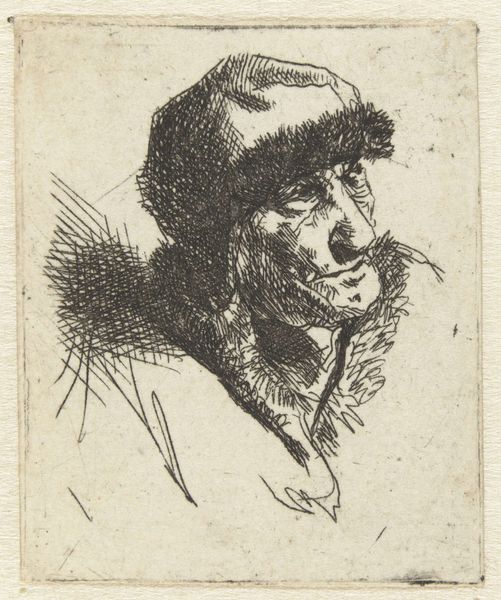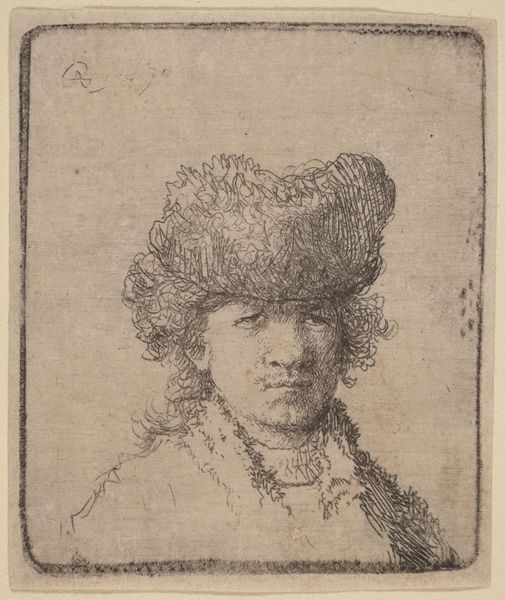
print, engraving
#
portrait
#
self-portrait
# print
#
figuration
#
line
#
history-painting
#
engraving
Dimensions: height 82 mm, width 68 mm
Copyright: Rijks Museum: Open Domain
This is Anthonie Willem Hendrik Nolthenius de Man’s etching of Rembrandt. De Man lived during a period of significant political and social upheaval in Europe, including the Napoleonic Wars and the rise of nationalism. This etching offers an interesting perspective on how artists engage with their predecessors. De Man, working in the 19th century, looks back at the 17th-century master Rembrandt, and in doing so, he's not just creating a copy, but also interpreting Rembrandt through his own lens, influenced by the artistic and cultural values of his time. It's an act of homage, but also an assertion of his own artistic identity. Consider the role of portraiture in constructing identity. This image of Rembrandt presents a particular vision of the artist, which tells us as much about de Man's perception of artistic genius as it does about Rembrandt himself. How do artists create legacies and shape our understanding of art history?
Comments
No comments
Be the first to comment and join the conversation on the ultimate creative platform.
